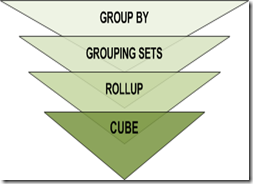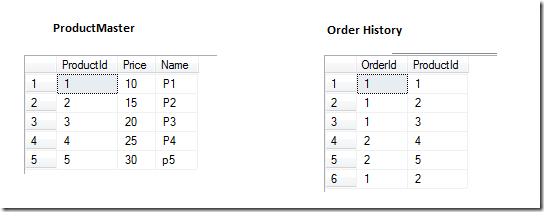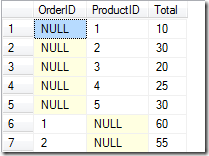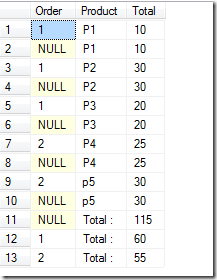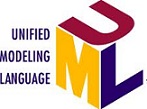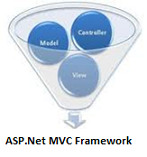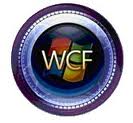Archive for the ‘Sql Server’ Category
Select latest record from recordset using SQL and LINQ
Problem : How to select latest order from a list of order collection based on date using LINQ and SQL
SQL Table Order
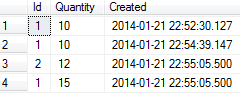
SQL Query
select T1.id, T1.quantity from [order] T1
inner join (select ID, Max(created) as latest from [order] group by ID) T2
ON (T1.ID = T2.ID and T1.created = T2.latest)
LINQ
class Order
{
public int ID { get; set; }
public int Quantity { get; set; }
public string Created { get; set; }
}
List<Order> Orders = new List<Order>();
Orders.Add(new Order() { ID = 1, Quantity = 10, Created = DateTime.Now.ToString("yyyy-MM-dd HH:mm:ss.fff") });
Thread.Sleep(1);
Orders.Add(new Order() { ID = 1, Quantity = 10, Created = DateTime.Now.ToString("yyyy-MM-dd HH:mm:ss.fff") });
Thread.Sleep(1);
Orders.Add(new Order() { ID = 2, Quantity = 12, Created = DateTime.Now.ToString("yyyy-MM-dd HH:mm:ss.fff") });
Thread.Sleep(1);
Orders.Add(new Order() { ID = 1, Quantity = 15, Created = DateTime.Now.ToString("yyyy-MM-dd HH:mm:ss.fff") });
List FinalOrders = (from a in Orders group a by a.ID into latest
join b in Orders on new { ID = latest.Key, dt = latest.Max(itm => itm.Created) } equals new { ID = b.ID, dt = b.Created }
select new Order {ID = b.ID, Quantity = b.Quantity}).ToList();
GROUP BY, GROUPING SETS, ROLLUP and CUBE
Before you I go directly with each function I can give you table view where I have tested all these functions.
I have used two tables to create an example with order and purchasing items for same.
GROUP BY and GROUPING SETS
I do not need to explain much about GROUP BY since everybody knows well but when we combine GROUPING SETS with GROUP BY it is quiet different and gives a summary result on top of GROUP BY. So basically if some body want to find a total amount at each order or purchase level, this will be the ideal function. Please see below the query and results
SELECT oh.OrderID ,oh.ProductID ,SUM(p.price) AS Total FROM OrderHistory oh inner join product p on oh.productid = p.productid GROUP BY GROUPING SETS(oh.OrderID,oh.ProductID)
ROLLUP
ROLLUP is again going one more level into the summary . for eg : if we want to display Order and items purchased for that order and also total order.
SELECT COALESCE(cast(oh.OrderID as varchar(50)),'Grand : ') as 'Order', COALESCE(p.Name,'Total : ') as Product ,SUM(p.price) AS Total FROM OrderHistory oh inner join product p on oh.productid = p.productid GROUP BY oh.OrderID,p.Name WITH ROLLUP
CUBE
![]() CUBE is again going one more level into the summary . for eg : if we want to display Order and each items purchased for that order and also total order.
CUBE is again going one more level into the summary . for eg : if we want to display Order and each items purchased for that order and also total order.
SELECT oh.OrderID as ‘Order’, COALESCE(p.Name,‘Total : ‘) as Product, SUM(p.price) AS Total FROM OrderHistory oh inner join product p on oh.productid =p.productid GROUP BY oh.OrderID, p.Name WITH CUBE
![]() happy reading and please let us know if anybody have a better approach than this or any other easy and optimized way to achieve the same summary results.
happy reading and please let us know if anybody have a better approach than this or any other easy and optimized way to achieve the same summary results.
